When we measured subjects with a tristimulus colorimeter (Part I-10)
in Part I, we could only obtain numerical color data in various color spaces.
If we use a spectrophotometer for measurements, not only can we obtain the same types of numerical data,
but we can also see the spectral reflectance graph for that color. Further, with its high-precision sensor
and the inclusion of data for a variety of illuminant conditions, the spectrophotometer can provide higher
accuracy than that obtainable with a tristimulus colorimeter.
Precise Color Communication
 |
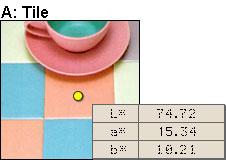
A pink tile was measured. By looking at the spectral reflectance graph, we can see that
the tile reflects light at all wavelengths, and that the spectral reflectance in the wavelength regions
above 600nm (the orange and red regions) is a bit higher than that of other wavelength regions.
|
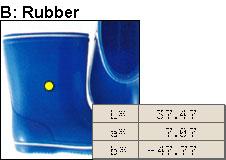
This is a vivid blue. The spectral reflectance in the wavelength region from 400 to 500nm
(the indigo and blue regions) is high, and the spectral reflectance for wavelengths longer than 550nm is low,
with almost all light in this region being absorbed.
|
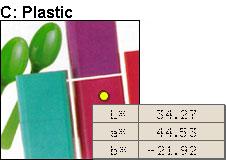
A reddish-purple plastic part was measured.
The regions around 400nm and 700nm have high spectral reflectance,
and the wavelength region from 500 to 600nm has low spectral reflectance
and we can see that the light is absorbed.
|
||
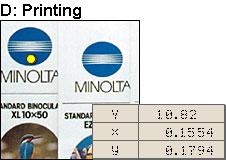
The blue logo was measured. The spectral reflectance is almost the same as that for B,
but if we look carefully we notice that the spectral reflectance at wavelengths of longer than
600nm is even lower. This is a slightly deeper blue.
|
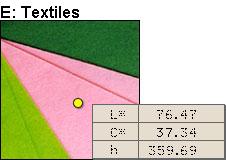
The pink area of the cloth was measured. The spectral reflectance over the entire wavelength range is high,
particularly around 600nm. On the other hand, the spectral reflectance is lower around 550nm,
indicating that green and yellow light was absorbed.
|
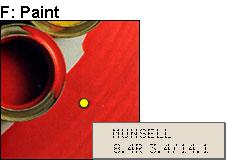
This is a vivid red paint.
Only the wavelength region from 600 to 700nm (the red and orange regions) has high reflectance;
most light at wavelengths below 600nm was absorbed.
|
||
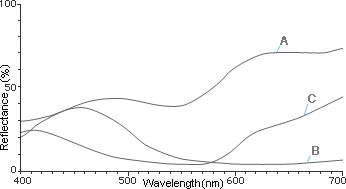 |
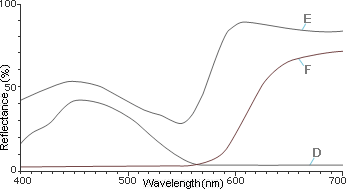 |
| 5/9 | ||
|
|

